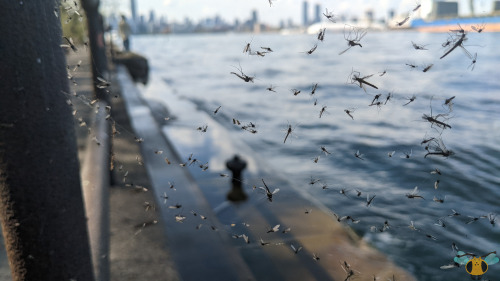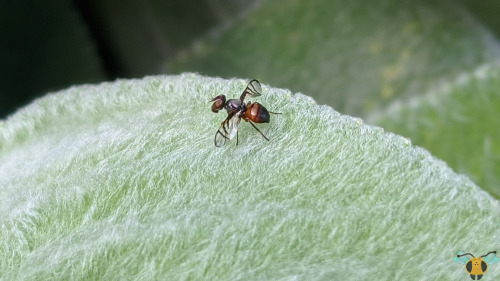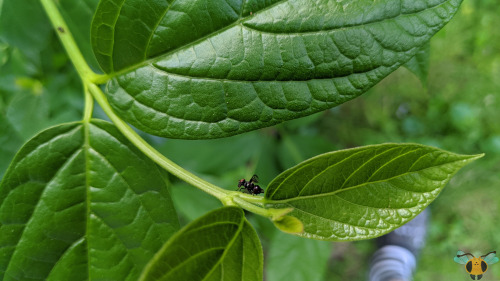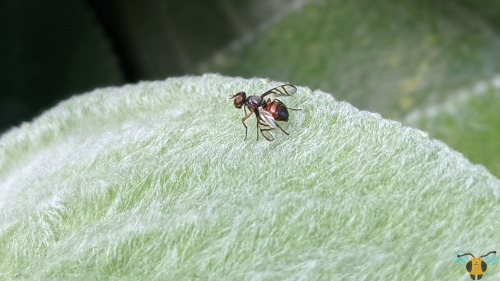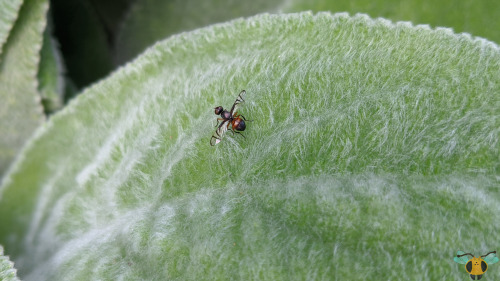#unidentified
Chrysis sp. “Cuckoo Wasp” Chrysididae
Missoula, MT
May 17, 2016
Robert Niese
Cuckoo Wasps are a massive, possibly polyphyletic group of parasitic wasps. More than half the members of this giant family are placed in the genus Chrysis(more than 1000 species!). Undoubtedly, in the coming years this genus will be stripped, split, and reorganized in favor of a more monophyletic and phylogenetically accurate set of genera. As their common name might suggest, cuckoo wasps lay their eggs in the nests of other wasps, and many specialize on a single host species. This lovely individual appeared to be waiting outside an old nail hole on the side of my house that was occupied by a cavity-nesting wasp of some sort.
Post link
Portrait of an unidentified soldier by Welsh photographer Calvert Richard Jones, c. 1845-1850.
Source: Metropolitan Museum of Art.
Post link
Floral Crucifix stitched by sjsteiner77.
“Pattern found on Pinterest, and I changed the colors to things I had. I did this little stitch for my Grandma. It is being delivered today, but she passed away yesterday. I’m sad she didn’t get to see it, but we’ll hopefully be picking it up next week so my mom can keep it in memory of her.”
Post link
Midges - Family: Chironomidae | Species unknown
Afterlast week’s video post showcasing these insects and their dancing formations over flowing water, this week we’ll attempt to get a closer look at them. It’s funny how the insects seem of reasonable size when you actually hold or see one, but when looking at them against the sky, one could be mistaken to thinking that it’s just birds flying in the distance. Each speck represents one Midge flying around so there’s probably 50 or so in picture 2. Those are rather small, and actually very close, but not all Midges are so tiny. Some are larger, and there is a size difference between females and males. Based on what I’ve read females are larger, but the males have plumose antennae. More than a decoration for their appearance, they (similar to Moths) use those feathered antennae to help them find a mate. Looking at the individual I’ve caught in Pictures 1 and 10, you can get a closer look at the features. Take note of the elongated body, shortened wings, feathered antennae and the positioning of the front legs. Though a bit roughed up from the capture, this hardy fellow was able to fly away after a few pictures. These are non-biting Midges, which may imply that there are biting Midges…and yes there are. Those belong to the family Ceratopogonidae and some do bite humans.
As said earlier, they are drawn to bodies of water and moist environments as those places are beneficial places for the placing of eggs. The adult Midges need to get to work quickly as they usually live for a few weeks, if that long. Depending on the specie, they may not even feed when they are adults (some take honeydew or nectar), so the timing is quite urgent. Fortunately, they can mitigate most risks with simultaneous emergence (again, it depends on the specie) and the emerge of massive swarms. While annoying for boaters, bikers and visitors of a waterfront, the sheer numbers of Midges allow more than enough to survive to ready the next generation, even if a few get caught in spider webs or eaten by other predators. They lack defenses aside from their flying prowess, and since they’re often mistaken for Mosquitoes, they can be eaten or swatted at with little thought. While similar in appearance to Mosquitoes and closely related to them, these non-biting Midges don’t have a taste for blood and have a few differences that you can use to tell them apart, all of which can be found in the first paragraph of this post. The front legs should stand out immediately, and as such both insect groups have different postures when landed.
Pictures were taken on May 11 and 15, 2022 with a Google Pixel 4.
Post link
Midge Swarm - Family: Chironomidae | Species unknown
Please view this in HD to not obscure the insects behind resolution pixelization. There’s no insect close ups in this video, but instead the dance to see a swarm of insects that recur year after year. Over bodies of water, adult Midges emerge and swarm to find mates. It’s a bit of a common sight in Ontario as the seasons shift into spring. If this is what they’re like here, can you imagine the amount of little Flies that cottage country sees? Goodness me! Potentially numbering in the hundreds over here, they can certainly get in your way as you’re walking around near a body of water. I sometimes see masses of them hovering over the pine bushes in the front yard, especially before or after rain. Seems moisture is the key to their success. Fortunately, while these Midges can make visibility difficult, these are not biting insects and do not need to be avoided in the same way Mosquitoes would be. That’s a good small miracle. To otherwise prepare for these spring swarms, make sure your window screens are in place, wear some goggles or glasses, and bring a net if you want to try capturing and observing a few members of the swarm. The midges in particular are tiny, black, somewhat long-legged and have transparent wings. When swinging my hand through the insect cloud to catch a few, several mating pairs were stunned for a bit, and then flew away. One detail I did catch was that the males have (white, almost see-through) feathered antennae similar to some Moths. This may help identify it better, but without a super close up view, identification will be impossible. For now, let’s just enjoy the sunset swarming.
Video was recorded on May 11, 2022 with a Google Pixel 4. For close-ups of a small insect, please check out this post featuringCarpet Beetles which received an update today with new pictures.
Signal Fly - Rivellia spp.
The process continues to add more insect families to the blog, so today these tiny individuals will join the blog. The pictures don’t really do their motions justice, as while it has been a few years since these pictures were taken, I can distinctly remember their most prominent behavior. As they were crawling and searching on the leaves: their wings were always shifting around and orienting as if balancing. Why do they actually keep moving their wings as they move? I’m not entirely sure, but it can’t just be for balance. Flies by their design have halteres to balance themselves while in flight and have 6 legs to keep balanced when they walk. I could see the wings having use in temperature regulation, but generally wing motion is limited to be effective, and I’m not sure how much heat those stripes on the wings would absorb or radiate. Hmmm, maybe they’re flashing their wings to show off those patterns to attract other Flies, possibly mates. If they return to the backyard I’ll have to keep a close eye on them, watching for their metallic body and patterned wings.
I’m more inclined to believe the idea that the wings help attract mates (or possibly even serve to communicate other things) because we’ve seen similar behavior in the Peacock Fly, who holds its wings upright when roaming around its environment or when near others of its own kind. The similarities will have to be noted and compared, but it must be acknowledged that the Signal Fly on showcase here is not a Picture-Wing Fly. Though they may have similar heads and wing decoration, Signal Flies are their own thing, belonging to the family Platystomatidae (that’s a mouthful). They are an odd branch of Flies, but I welcome them here and hope to learn more about them. For examples: is their body shaped to take advantage of mimicry or does it serve another purpose? Are the individuals shown in the pictures different species or just variations in color? Finally, since they’re likely to gather in areas enjoyed by other Flies (decaying sources of food) how might they interact with them? A future post will showcase what I find.
Pictures were taken on June 4 and July 21, 2020 with a Google Pixel 4.
Post link

Glider Section, Broadway, Burma
Front Row (L-R) Flight Officer Samuel F. Steinmark; Second Lieutenant H. J. Delaney; unidentified; First Lieutenant Vincent J. Rose; unidentified; Captain William H. Taylor, Jr.; First Lieutenant Jackson J. Shinkle; First Lieutenant Patrick H. Hadsell; Flight Officer John L. “Jackie” Coogan Back Row (L-R) Flight Officer Francis L. Randall; First Lieutenant Soloman Schnitzer; Flight Officer James S. “Mickey” Bartlett; unidentified; unidentified; unidentified; Flight Officer Leo Zuk; First Lieutenant James E. Sever; First Lieutenant Steve T. Uminski Courtesy of 1st Air Commando Association
Photo and caption featured in Any Place, Any Time, Any Where: 1st Air Commandos in World War II (Schiffer Military Aviation History (Hardcover)) by R D Wagner
Peak district, UK, August 2021
Common funnels (Clitocybe gibba)
I’m not certain of this ID - at first I thought they were false chanterelles (Hygrophoropsis aurantiaca), but their gills are too large and distinct from the cap. I think these may be young common funnels, and if so would expect them to turn a lighter buff colour and develop a rougher stem as they mature. It doesn’t feel quite right though, so if anyone’s got any ideas, let me know!
Post link
Curious Sea Lions play with a starfish
(source)
In October 1867, a man was found wandering about the Donaldson’s yard om Ladonia, Texas. He appeared to be confused, incoherent, and obviously ill. He was never able to tell authorities who he was, and he died on October 4, 1967. He was buried in the Donaldson’s plot in The Ladonia Cemetery, and his identity still remains a mystery.
Post link















